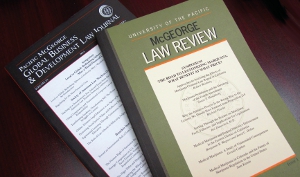Overlooked temporal issues in statutory interpretation
Document Type
Article
Publication Date
2008
Abstract
There is an important but chronically overlooked problem in statutory interpretation. Courts frequently create and modify rules of statutory interpretation in common law fashion but ignore important temporal issues raised by the creation or modification of these interpretive rules. Specifically, courts seldom consider whether new or modified interpretive rules should be applied only prospectively to statutes enacted after the decisions that created or modified the rules. The failure of courts to consider these temporal issues undermines one of the fundamental assumptions of statutory interpretation-that Congress chooses statutory language in light of established rules of interpretation-and thus risks delegitimizing statutory interpretation. Indeed, as this Article illustrates through the examination of representative Supreme Court decisions, the judiciary's failure to consider these temporal issues has resulted in erroneous statutory interpretations. Notwithstanding the enormous attention given statutory interpretation by scholars over the past couple of decades (including the proposal and examination of various sophisticated, high-level interpretive methodologies), the temporal issues that retroactive application of new or modified interpretive rules raises have been virtually ignored in statutory interpretation scholarship. This Article fills the void by outlining when courts should apply new or modified rules only prospectively. Despite the plausibility of an argument that all new or modified interpretive rules should be applied only prospectively, this Article argues that only the most powerful rules should be considered for prospective-only application and describes when it is appropriate for even these rules to be applied retroactively. As this Article explains, the judicial consideration of temporal issues will bring much-needed clarity and transparency to statutory interpretation, as well as potentially cause courts to reexamine the proper judicial role in light of legal realist insights about the nature of statutory interpretation. © 2008 Temple University of The Commonwealth System of Higher Education.
Publication Title
Temple Law Review
ISSN
0899-8086
Volume
81
Issue
3
First Page
635
Last Page
688
Recommended Citation
Brian G. Slocum,
Overlooked temporal issues in statutory interpretation,
81
Temp. L. Rev.
635
(2008).
Available at:
https://scholarlycommons.pacific.edu/facultyarticles/408



